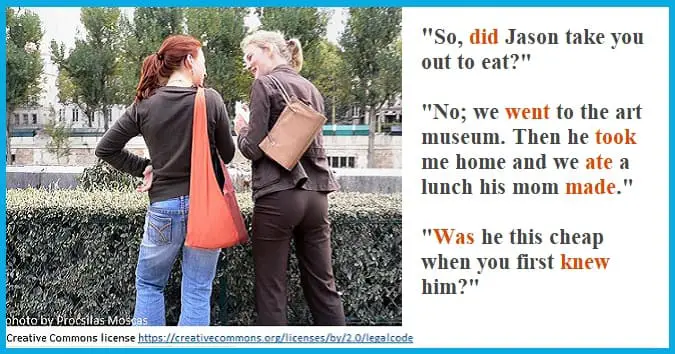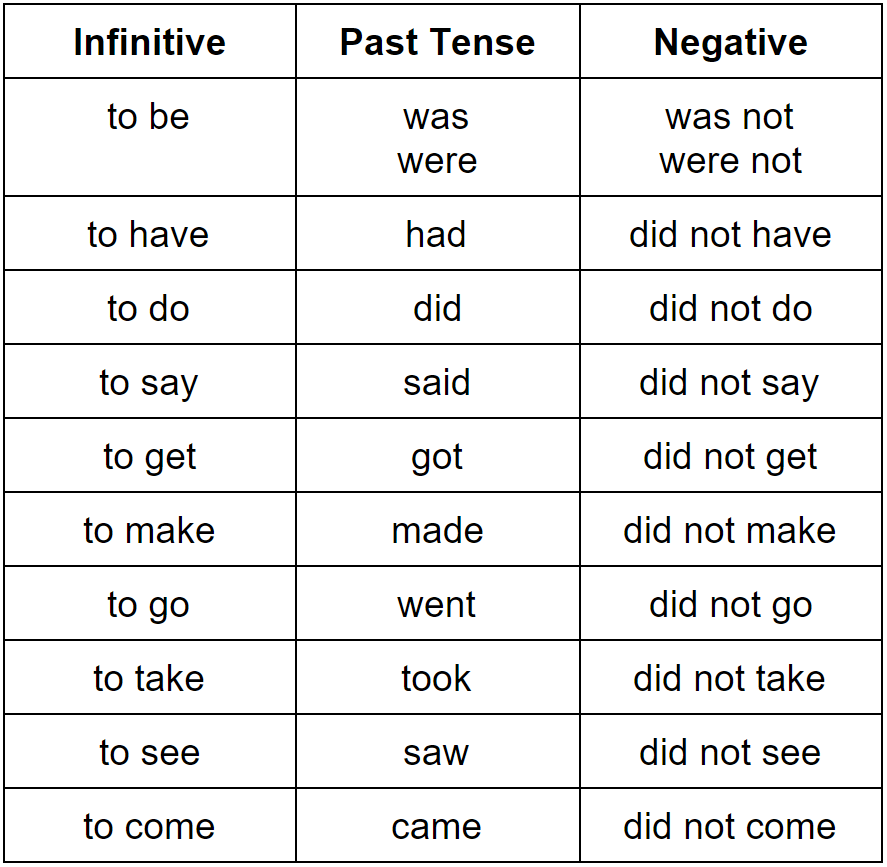
What is the past participle of see? The past tense of see is saw. The third-person singular simple present indicative form of see is sees.
Translate see in context, with examples of use and definition. So, the past tense form of “ see” is saw. One can check verbs forms in different tenses. Use our search box to check present tense, present participle tense, past tense and past participle tense of desired verb.
The common misconception is that. English verbs conjugated in all tenses with the bab. Seen is the PAST PARTICIPLE of the VERB see.
Generally, seen is used alongside have, has, ha was or were in a sentence to make COMPOUND VERBS. USAGE: saw: This word is a stand-alone VERB. It doesn’t need another VERB to prop it up. The verb sehen is both a stem-changing verb and an irregular (strong) verb.

Sehen - Present Tense - Präsens. Past continuous: I was working. The time of the action can be in the recent past or the distant past and action duration is not important. The simple past is the basic form of past tense in English.
To see a further explanation of the present perfect tense, click here. I had already seen the movie twice before seeing it tonight.
With these two elements, you can construct this common past tense to match the subject pronoun. For example, "we saw" is nous avons vu. Woman in red cardigan: People do get their tenses of a verb confused. Synonyms for see at Thesaurus.
Find descriptive alternatives for see. The four past tenses are the simple past tense, the past progressive tense, the past perfect tense, and the past perfect progressive tense. All rights reserved. A verb tense used to express an action or a condition that occurred in or during the past.
Examples of Regular Verbs in Sentences. A great way to understand how past tense verbs are used is to see them in sentences. He graciously accepted the award on her behalf. I think Sara added too much sugar to the recipe.

Jones for his intellect. Corinne admitted that it was all her fault. It forms the simple past, which is used to express an action that has started and finished at a specific time in the past. Saw is the past tense of the verb see.
We saw the parade this morning. I saw Star Wars yesterday. He saw her jogging on the sidewalk in the afternoon.
The first person plural (nosotros) endings for regular -ar and -ir verbs are the same for both the preterite and present tenses. Context clues, such as adverbs like siempre (always) and ayer (yesterday), can help you figure out if a nosotros form refers to the past or the present.
Hiç yorum yok:
Yorum Gönder
Not: Yalnızca bu blogun üyesi yorum gönderebilir.